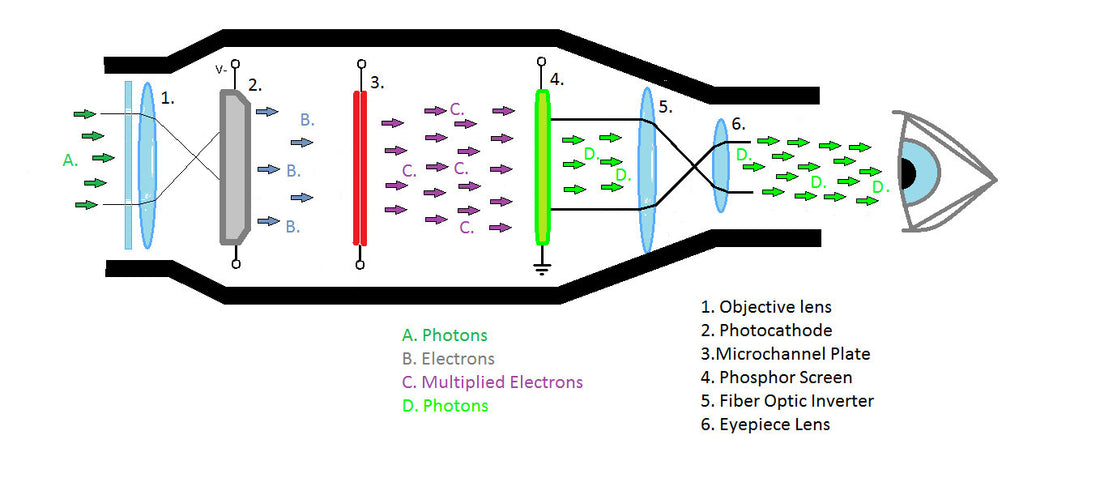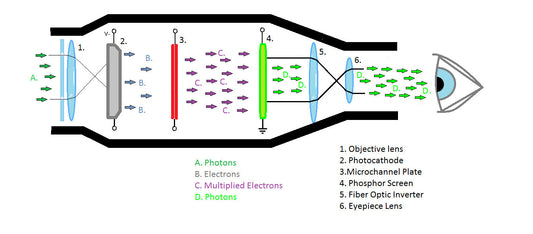Photons from a low-light source enter the front lens system of the night vision device.
The objective lens collects light that can not be seen with the naked human's eye and focuses it on the image intensifier tube. Sometimes when the light level is too low it is necessary to illuminate the object by using Infra Red emitter.
The light that is made up of photons enters the unit and strikes the sensitive plate called photocathode. This negatively biased photocathode absorbs light energy and converts the photons into electrons.
The electrons move to the photomultiplier that is a kind of photoelectric cell where each one electron is amplified and converted into many electrons by a factor of thousands through the use of a higher-voltage micro channel plate called MCP.
The MCP is a tiny glass disc that has millions of microchannels - microscopic holes in it, made using fiber optic technology. The MCP contains a vacuum and has metal electrodes on either side of the disc. Accelerated electrons pass through the microchannels and create a cascade effect called cascaded secondary emission which is responsible for the multiplication of electrons.
A large number of electrons from the photomultiplier hits the phosphor screen and as a result create tiny flashes of light. That is similar effect as in a monitor or TV. These electrons maintain their position in relation to the channel they passed through, which provides a perfect image since the electrons stay in the same alignment as the original photons. The energy of the electrons causes the phosphors to reach an excited state and release photons which create the image on the higher-voltage phosphor screen.
The image is always monochromatic and the color is given by the type of the phosphorus used to coat the screen. Most often it is in a green color because our eyes are more sensitive to green light. Green light is easier to look at rather than the black and white images.
The green phosphor image is viewed through another lens, called an eyepiece or ocular lens, which allows user to magnify and focus the image.
The image may be viewed directly through the eyepiece or on an electronic display, such as a monitor, if CCD module will be connected to the device.


